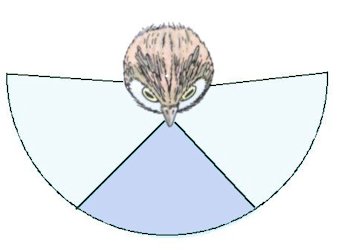
|
Sense of Vision for Birds - Page 1 Based on the size of their eyes alone, you might guess that birds see extremely well. Their eyes are much larger in proportion to the sizes of their heads than our eyes are. In fact, some owls and eagles have eyes that are the same size as human eyes, though their heads are much smaller than ours. Birds' sense of sight is much higher resolution than ours. Hawks, for example, see two to three times as much detail than people do. But most birds do not have the depth perception that we do because of the placement of their eyes. Depth is perceived when each eye provides a slightly different view of the same scene, when there is an overlap in the field of vision. This is known as binocular vision. Birds such as Owls, which have both eyes facing forward, have binocular vision similar to our own, but most nonpredatory birds have eyes whose fields of view do not overlap enough to provide this ability. Instead, their laterally placed eyes give them a wider total view, the better to detect an approaching predator. Scientist believe that to compensate for their lack of binocular vision, some birds bob their heads, thereby viewing the same subject rapidly from different angles. Dippers bob nonstop along mountain streams. Many shorebirds bob rapidly when a predator appears nearby. |
|
Field of Vision
Eastern Screech-Owl |
|
| Return to Avian Senses On to Page 2 ⇨ | |